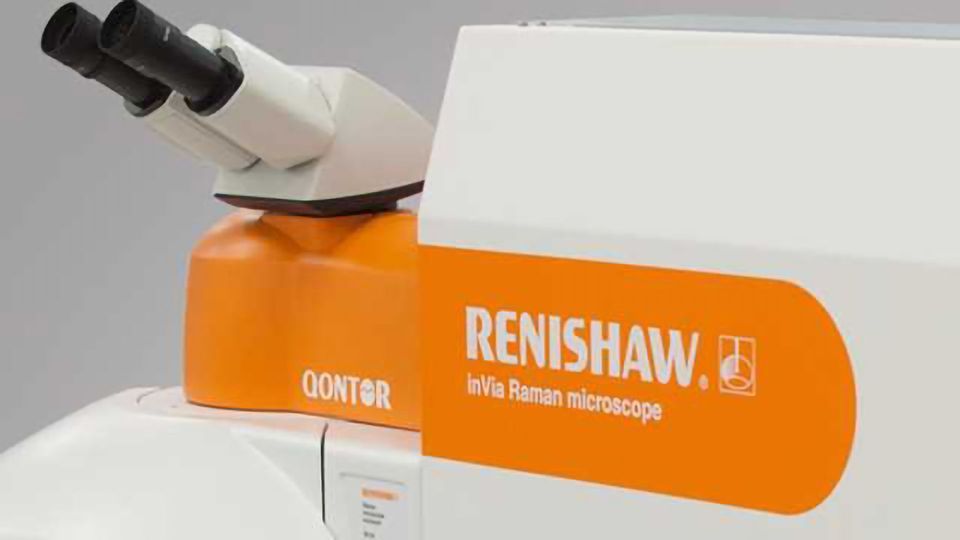Renishaw Helps with Perovskite Solar Panel Research

Want to listen to this article for FREE?
Complete the form below to unlock access to ALL audio articles.
Read time: 1 minute
Dr Tim Batten and Dr Ian Hayward represented Renishaw at the recent PSCO-2017 conference on perovskite solar cells and optoelectronics hosted by The Mathematical Institute, Oxford, UK.
Perovskites—normally in the form of hybrid organic-metal lead/tin halides—exhibit promise as solar cell materials, and offer advantages over the more common crystalline silicon. For example, you can coat substrates from solution or by deposition and produce low-cost large-area cells. You can also deposit them on other cell types to produce tandem cells that have a greater light harvesting capability. However, there are potential problems, such as poor long-term stability.
As a result, there has been much research activity, with thousands of papers and articles published in 2016 alone, and much discussion at scientific conferences. The event in Oxford was the third in the PSCO series and attracted 400 delegates with both academic and industrial backgrounds.
Raman spectroscopy is a very useful tool for studying these materials as it reveals detailed composition and microstructural information, and can identify degradation products. Despite this, researchers don’t use it as widely as other techniques, because perovskites are prone to laser damage, making measurements difficult unless the Raman system is appropriately equipped and configured.
Tim Batten presented a technical poster (co-authored with X. Song, P.B. Pillai, and M.M. De Souza of University of Sheffield, and J. Barbe and W.C. Tsoi of Swansea University) which detailed Raman spectroscopy studies of perovskites. Tim and colleagues used five different laser wavelengths, from 488 nm to 830 nm, and determined the most appropriate laser wavelength for typical perovskite measurements. Tim also reported on the maximum laser power levels they could use before sample degradation occurred.
Renishaw’s inVia Raman microscope is ideal for this work. It supports multiple laser wavelengths and you can choose the appropriate one to maximise Raman signal whilst avoiding sample damage. Renishaw’s StreamLine technology also illuminates a line, rather than a spot, on the sample, greatly reducing the power density, preventing damage to the perovskite.
Perovskites—normally in the form of hybrid organic-metal lead/tin halides—exhibit promise as solar cell materials, and offer advantages over the more common crystalline silicon. For example, you can coat substrates from solution or by deposition and produce low-cost large-area cells. You can also deposit them on other cell types to produce tandem cells that have a greater light harvesting capability. However, there are potential problems, such as poor long-term stability.
As a result, there has been much research activity, with thousands of papers and articles published in 2016 alone, and much discussion at scientific conferences. The event in Oxford was the third in the PSCO series and attracted 400 delegates with both academic and industrial backgrounds.
Raman spectroscopy is a very useful tool for studying these materials as it reveals detailed composition and microstructural information, and can identify degradation products. Despite this, researchers don’t use it as widely as other techniques, because perovskites are prone to laser damage, making measurements difficult unless the Raman system is appropriately equipped and configured.
Tim Batten presented a technical poster (co-authored with X. Song, P.B. Pillai, and M.M. De Souza of University of Sheffield, and J. Barbe and W.C. Tsoi of Swansea University) which detailed Raman spectroscopy studies of perovskites. Tim and colleagues used five different laser wavelengths, from 488 nm to 830 nm, and determined the most appropriate laser wavelength for typical perovskite measurements. Tim also reported on the maximum laser power levels they could use before sample degradation occurred.
Renishaw’s inVia Raman microscope is ideal for this work. It supports multiple laser wavelengths and you can choose the appropriate one to maximise Raman signal whilst avoiding sample damage. Renishaw’s StreamLine technology also illuminates a line, rather than a spot, on the sample, greatly reducing the power density, preventing damage to the perovskite.

